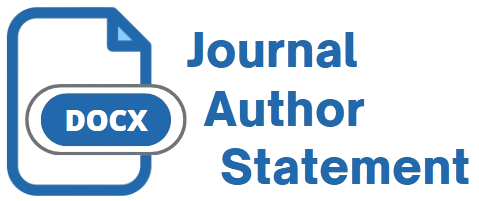The Relationship Between Social Media Use and Mental Health Among Adolescents at SMP Negeri 11, Kupang
DOI:
https://doi.org/10.56359/igj.v4i2.603Keywords:
Social media, mental health, adolescents, anxiety, depressionAbstract
Background & Objectives: The advancement of information and communication technologies, especially social media, has significantly impacted daily life, particularly among adolescents. This age group is particularly vulnerable to mental health disorders such as anxiety, depression, and stress due to excessive social media use. This study aims to investigate the relationship between social media use and mental health among adolescents at SMP Negeri 11 Kupang.
Methods: This quantitative research adopts a cross-sectional design. The population consists of all students at SMP Negeri 11 Kupang. A sample of 100 students was randomly selected. Data was collected via questionnaires that assessed the frequency and intensity of social media use, as well as mental health indicators (anxiety, depression, stress). Data analysis was performed using descriptive and inferential statistics, specifically Pearson correlation tests.
Results: There is a significant relationship between the frequency and duration of social media use and levels of anxiety, depression, and stress in students. Sixty percent of students who use social media for more than 4 hours a day show higher levels of mental health symptoms compared to those who use it less than 2 hours per day.
Conclusion: Excessive social media use has a negative impact on adolescent mental health. Therefore, it is necessary to provide education and supervision from both parents and schools on the healthy and wise use of social media.
Downloads
References
Adinda Naila Apsari D, U. (2025). Analisis Sistematis Dampak Media Sosial Terhadap Kesejahteraan Mental Remaja. 3(1), 175–179.
Agus Iryadi et al. (2023). Pengaruh Media Sosial Terhadap Kesehatan Mental Remaja. MUDABBIR Journal Reserch and Education Studies, 3(2), 50–54. https://doi.org/10.56832/mudabbir.v3i2.370
Aritonang, A., Claudia, G., Saragih, V., Ayu, F. M., Manurung, C., Sitorus, M., Nauli, R., Bintang, S., Tampubolon, U., Jamaludin, J., & Yunita, S. (2025). Dampak Tren Tiktok Terhadap Perkembangan Moral pada Siswa - Siswi di SMA Negeri 10 Medan.
Gunawan, I. A. N., . S., & Shalahuddin, I. (2022). Dampak Penggunaan Media Sosial Terhadap Gangguan Psikososial Pada Remaja: A Narrative Review. Jurnal Kesehatan, 15(1), 78–92. https://doi.org/10.23917/jk.v15i1.17426
Kusumawaty, J., & Nurapandi, A. (2022). Edukasi Dan Mobilisasi (ROM) pada Lansia Penderita Stroke dengan Audio Visual di Panti Jompo Welas Asih Tasikmalaya. Kolaborasi: Jurnal Pengabdian Masyarakat, 2(1), 45-51.
Kumala, A. P. B., & Sukmawati, A. (2020). Dampak Cyberbullying Pada Remaja. Alauddin Scientific Journal of Nursing, 1(1), 55–65. https://doi.org/10.24252/asjn.v1i1.17648
Mulyono, F. (2021). Dampak Media Sosial bagi Remaja. Jurnal Simki Economic, 4(1), 57–65. https://doi.org/10.29407/jse.v4i1.66
Novita, R., & Dian, A. (2024). Hubungan Durasi Penggunaan Media Sosial Tiktok Dengan Tingkat Kecemasan Pada Remaja Sman 7. 5(2023), 11309–11315.
Nurdiana, M., & Rahman, I. (2025). Dinamika Perilaku Sosial Remaja Akibat Kekerasan Verbal : Studi Under- Sosial dan Over-Sosial di Kebagusan Jakarta Selatan. 2.
Sachiyati, M., Yanuar, D., & Nisa, U. (2023). Fenomena Kecanduan Media Sosial (Fomo) Pada Remaja Kota Banda Aceh. Jurnal Ilmiah Mahasiswa FISIP USK, 8(November), 1–18.
Simanjuntak, S. (2023). Literatur Review: Pengaruh Screen Time Terhadap Masalah Perilaku Anak. Jurnal Keperawatan, 11(1), 64–80. https://doi.org/10.35790/j-kp.v11i1.48465
Srg, R. R. (2024). Membangun Keterampilan Internet Cerdas dan Bijak Bermedia Sosial Bagi Anak dan Remaja Sebagai Upaya Perlindungan Data Pribadi dan Pencegahan Kejahatan Siber. 6.
Downloads
Published
Versions
- 2025-05-31 (2)
- 2025-05-28 (1)
How to Cite
Issue
Section
License
Copyright (c) 2025 Violin Irene Ninef, Felipus Stefen Ndun, Asmawati Ansar, Rusdiyanto Randja Andung, Ni Made Ayu Dinda Saputri

This work is licensed under a Creative Commons Attribution 4.0 International License.

















